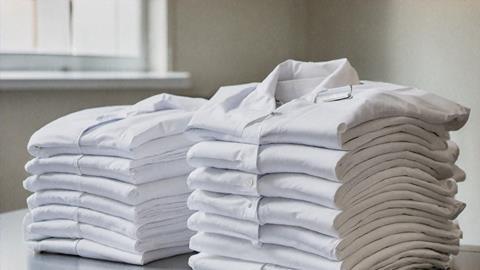Along with safety goggles and gloves, a lab coat is part of a lab technician’s standard equipment. And with good reason, because a good lab coat is essential for working safely. But not all lab coats are created equal. Here are some tips to help you choose the right lab coat.
A lab coat protects your clothing and keeps you safe. A good lab coat is especially important for chemical lab technicians when working with acids, bases or other chemicals. Most lab coats are made from a blend of polyester and cotton, but 100% cotton coats are also available. Your lab coat should be loose-fitting for comfort and freedom of movement, but not so loose as to be a safety hazard.
Make sure you have a lab coat with long sleeves and cuffs to protect your arms. A good lab coat can be taken off quickly in the usual way, i.e. not over your head. The advantage of a lab coat with press studs is that you can take it off quickly in an emergency. Sometimes there is a press stud strip that allows all the buttons to be opened at the same time with a single movement. The sleeves of the lab coat should have well-fitting cuffs to prevent liquids from getting into the sleeves. Elasticated cuffs also make it easier to keep your hands free. Lab coats with a stand-up collar are useful to protect the neck. Small items can often be stored in front pockets and/or an inside pocket. Some lab coats have a split at the back for extra freedom of movement.
The standard lab coat is white. This has the advantage that any contamination is clearly visible. But there are other options. There are now all sorts of colours on the market: pink, yellow, orange or (pistachio) green. There are also less flashy colours, such as grey or dark blue. As well as a greater variety of colours, there are now several different fits. There are more tailored models or ones with a princess line that are more suited to women. Whichever you choose, safety is paramount, so make sure you have enough freedom of movement.
How to keep your lab coat in tip-top condition
Do:
- Wash regularly
Depending on how often you wear your lab coat and how much it is exposed to contaminants, it should be washed regularly to remove dirt and residue. It is best to treat stubborn stains with a stain remover before washing. - Dry thoroughly
Dry the lab coat according to the instructions. Some lab coats can be tumble dried, others must be air dried. Drying the coat thoroughly will prevent mould growth. Avoid excessive heat to prevent damage to the fabric. - Store in a dry place
If you are not using the garment immediately after washing, store it in a dry place out of direct sunlight. This will preserve the integrity of the fabric and prevent mould growth.
Don’t:
- Polyester with flammable substances
Do not buy a standard lab coat if you work with flammable substances; choose a lab coat with a flame retardant coating instead. - Hot ironing
Most lab coats can be ironed at 150 degrees or up to two points on the iron. Do not bleach the lab coat. - Wash at a low temperature
To thoroughly remove all chemicals and microorganisms, the coat must be washed at a high temperature, at least 85 °C.













Nog geen opmerkingen